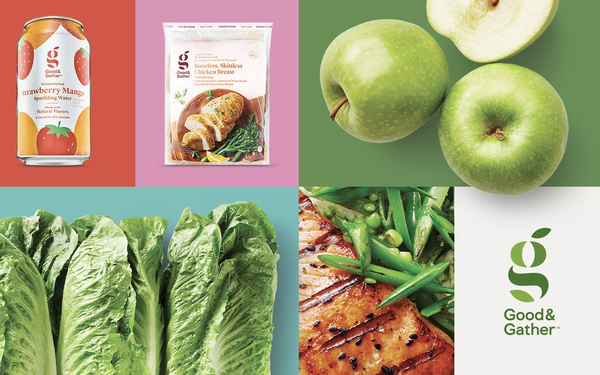
Target is lowering prices on
5,000 items
For the first time in a year, the government just announced that grocery prices dropped, falling 0.2% in April. That didn’t stop Target from announcing it
would lower prices on more than 5,000 items. Whole Foods Market is also reducing prices on private-label products, hoping to give shoppers a sense of relief. Sally Lyons Wyatt, global executive vice
president and chief advisor for consumer goods and food service insights at Circana, tells Marketing Daily how the economy keeps shaking up consumers’ routines.
Marketing
Daily: Prices are coming down a little. But maybe our first topic should be, "What do consumers think inflation is doing?" versus "What is it doing?"
Sally Lyons Wyatt: That's a
loaded question. On average, from a retail CPG standpoint, prices are about 30% higher than in 2019. However, it has been decelerating from where we were a year and six months ago. It has dramatically
softened. And while consumers tell us they are very conscientious about pricing, we are moving further away from what they knew prices used to be. And sales volume is increasing.
advertisement
advertisement
Marketing
Daily: Are they buying more or even looking for better value?
Wyatt: Yes, and they’ve shifted to value channels. That means different things to different people. They’re
not just going to mass merchandisers or club stores, but to dollar and convenience stores, as well as online. People don’t think of convenience stores as a value channel, but they sell smaller
package sizes, so the price is lower. [Consumers are] not looking at price-per-serving, but what they’ll pay at the register.
Marketing Daily: Consumers have heard much about
"shrinkflation," and many feel that brands and retailers have been gouging people. Is there a lingering sense of resentment?
Wyatt: We have not surveyed to find that out, but it seems
like there will always be a subset of consumers that are focused on the actions of companies. They may think, "I used to get 25 cookies in my package, and now there are only 20." But most consumers
seem to be managing at a higher level and don’t seem fixated on that.
Marketing Daily: When a company like Target announces widescale price cuts, don’t people wonder, "Well,
why were you charging me so much before?"
Wyatt: This is probably yet another topic that is polarizing.
We went through a period where events like the Suez Canal backup impacted
supply chain prices. Brands and retailers must navigate that, and there were real cost implications.
You haven't seen many manufacturers or retailers reduce pricing. There are so many
complexities, and commodity costs are still high in some categories. But do I think companies are going out to try and deceive? I do not. Mistakes have been made, and maybe people could have done some
things differently and smarter, but I don't believe the industry is out to deceive anyone.

Marketing Daily: I notice when a price goes up but not
when it comes down. Am I typical?
Wyatt: Yes. Stores get dinged when they raise prices. But they don't get applause when they bring those back down.
Marketing Daily: One
of the changes your research has detected is a significant increase in DIY behavior, often in less expected ways. Can you explain?
Wyatt: Spending on video games is down, and so is
consumer tech, footwear, apparel, sports equipment and toys. People have decided those are discretionary categories. But they are spending on OTC healthcare, thinking, "I want to stay healthy because
I don't have the money to go to the doctor."
They spend money on mass beauty and personal care, saying, "I won’t get my nails done at the salon. I’ll do them at home." People are
cutting their hair more. They’re buying more auto parts because it is still too expensive to go out and buy a car. And people are pivoting to more at-home meals. Food service traffic is
down.
Marketing Daily: What does the DIY shift look like in food?
Wyatt: People can’t afford to go out as much as they used to, and they might even downscale when
they do go out. But they spend more time saying, "'I'm going to bring that out-of-home experience and do it myself." It’s been interesting to see how that played out in the way people celebrated
Teacher Appreciation Week or ideas for Memorial Day. People are cooking up different things for Taylor Swift-watching parties. More retailers are getting into this kind of occasion management.
Marketing Daily: People are dining out less?
Wyatt: Yes. Traffic is down. Looking at three months ending in March, every category is down except for fast casual.
Marketing Daily: What advice would you give CPG brands and food retailers?
Wyatt: I’d focus on occasion management. It doesn’t have to be just Thanksgiving or
Christmas. There are plenty of everyday occasions they can rally around. They can educate consumers on having an out-of-home experience in your home for a fraction of the price. And they should focus
on speed to the table.
Certainly, price is part of the context, but people are in a hurry to get a meal on the table. Time is valuable to people. Communication is key. Do not assume consumers
know what you have, what it costs, or what kind of promotion you plan.
This is a very important time for CPG and retail. Restaurant inflation is not slowing down because of labor costs.
Consumers are going to continue to eat more meals at home.